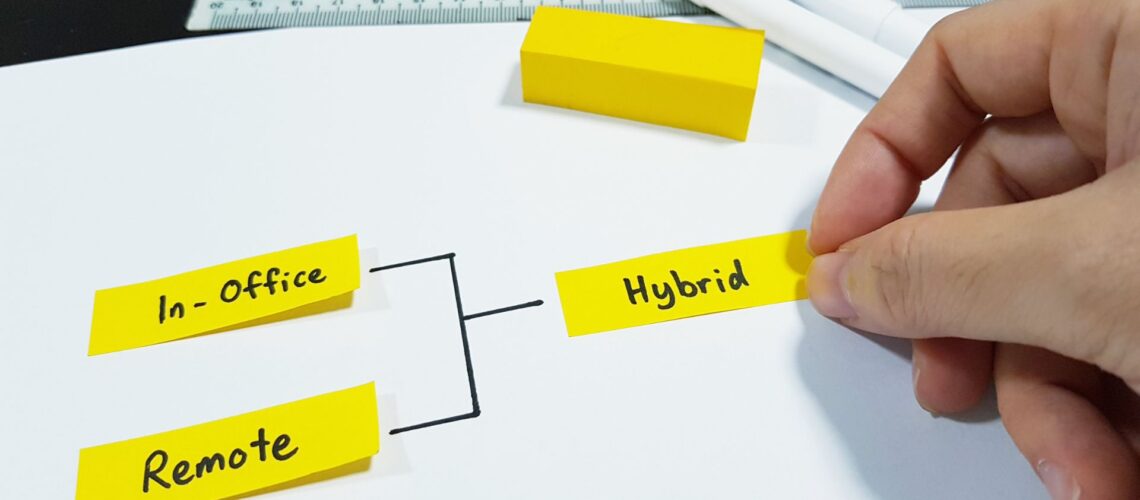The workplace landscape has undergone unprecedented transformation in recent years. With hybrid working becoming the new normal for 51% of UK employees¹, organisations must navigate the delicate balance between remote flexibility and maintaining team cohesion. Yet whilst hybrid models offer undeniable benefits, leaders cannot afford to overlook the fundamental human need for meaningful in-person connection.
Understanding how to strategically bring teams together has become a critical leadership skill. This comprehensive guide explores why physical gatherings remain essential for hybrid teams and how leaders can prioritise them to build thriving, connected workplace cultures.
The Psychological Foundation of Team Gathering
Humans are inherently social creatures, evolved to thrive through communal interaction. Despite the sophistication of modern digital communication tools, virtual connections cannot fully replicate the psychological benefits of physical presence. Research consistently demonstrates that lack of social interaction is damaging to our mental and physical health².
When teams gather physically, several critical psychological processes occur:
- Enhanced trust building: Face-to-face interaction triggers neurological responses that strengthen interpersonal bonds
- Improved emotional intelligence: Physical presence allows for nuanced reading of body language and micro-expressions
- Heightened engagement: The shared physical experience creates stronger memories and emotional connections
- Reduced isolation: Direct human contact combats the loneliness often associated with remote working
These psychological foundations explain why 58% of UK professionals identify creating a sense of belonging within the team as the main benefit of in-person collaboration³.
The Hidden Costs of Virtual-Only Teams
Whilst technology enables teams to function remotely, exclusive reliance on virtual interactions creates subtle but significant challenges that compound over time.
Communication Breakdown Across Generations
Modern teams often span multiple generations, each with distinct communication preferences and technological comfort levels. Virtual environments can exacerbate these differences, leading to misunderstandings and reduced collaboration effectiveness. Email and instant messaging, whilst efficient for routine communication, can quickly become clinical and impersonal when used as the primary interaction method.
Reduced Support for Vulnerable Team Members
New team members, those lacking confidence, or individuals developing new skills require additional support that virtual environments struggle to provide. The informal mentoring, quick clarifications, and reassuring presence available in physical settings become scheduled events rather than organic occurrences in remote environments.
Compromised Innovation and Decision-Making
True collaboration often emerges from spontaneous interactions and unplanned conversations. Virtual working structures tend to formalise these exchanges, potentially stifling the creative processes that drive innovation. Research shows that 43% of professionals believe in-person collaboration boosts productivity and creativity³, highlighting the tangible impact of physical presence on output quality.
Critical decisions may suffer when teams lack the immediate feedback loops and nuanced discussions that face-to-face environments provide. The ability to rapidly iterate on ideas, read room dynamics, and build consensus becomes significantly more challenging in virtual settings.
Strategic Benefits of Regular Team Gatherings
Forward-thinking leaders who prioritise regular in-person gatherings report numerous organisational benefits that extend far beyond simple team bonding.
Accelerated Relationship Building
Physical gatherings create opportunities for deeper professional relationships that form the foundation of high-performing teams. These stronger connections translate into improved collaboration, increased trust, and enhanced team resilience during challenging periods.
Cultural Reinforcement
Company values and culture are most effectively transmitted through shared experiences and observation of behaviours. Regular gatherings provide platforms for cultural reinforcement that virtual environments cannot match, ensuring remote team members remain aligned with organisational values.
Enhanced Learning and Development
Informal knowledge transfer occurs naturally during physical interactions. Senior team members can provide guidance, share expertise, and mentor junior colleagues in ways that feel organic rather than structured. This peer-to-peer learning significantly accelerates individual development and team capability.
Improved Conflict Resolution
When conflicts or misunderstandings arise, face-to-face resolution is often more effective than virtual alternatives. The ability to read body language, provide immediate clarification, and demonstrate empathy helps teams navigate challenges more successfully.
Best Practices for Implementing Strategic Gatherings
Successful implementation of regular team gatherings requires thoughtful planning and clear communication about expectations and objectives.
Frequency and Format Planning
Establish a regular cadence that balances operational needs with team preferences. Consider monthly half-day sessions for ongoing projects, quarterly full-day workshops for strategic planning, and annual multi-day events for comprehensive team building and culture reinforcement.
Targeted Participant Groups
Prioritise gathering frequencies based on team member needs:
- New team members: Weekly or bi-weekly initial gatherings during onboarding
- Project teams: Regular sessions aligned with project milestones
- Leadership groups: Monthly strategic planning sessions
- Cross-functional teams: Quarterly collaboration workshops
Clear Purpose Communication
Ensure all team members understand that hybrid roles include both flexibility and gathering expectations. Transparent communication about the rationale behind in-person requirements helps build buy-in rather than resistance.
Meaningful Activity Design
Structure gatherings around activities that genuinely benefit from physical presence:
- Collaborative problem-solving sessions
- Creative brainstorming workshops
- Team building exercises
- Strategic planning meetings
- Informal networking and relationship building
Measuring the Impact of Team Gatherings
Track specific metrics to demonstrate the value of in-person investments:
- Team cohesion scores: Regular surveys measuring team connectedness
- Collaboration effectiveness: Project completion rates and quality metrics
- Employee satisfaction: Engagement surveys focusing on belonging and support
- Innovation metrics: Idea generation and implementation rates
- Retention rates: Particularly among remote team members
Looking Forward: The Future of Hybrid Team Leadership
The most successful hybrid teams will be those led by leaders who understand that technology and human connection are complementary rather than competing forces. As the workplace continues evolving, the ability to strategically orchestrate meaningful human interactions will become an increasingly valuable leadership competency.
Regular team gatherings should not be viewed as a constraint on hybrid flexibility but rather as an investment in team effectiveness and individual wellbeing. Leaders who master this balance will create environments where remote workers feel as connected and supported as their office-based colleagues.

Frequently Asked Questions About Hybrid Team Culture
The optimal frequency depends on team dynamics and project requirements. Most successful hybrid teams gather monthly for half-day sessions, with quarterly full-day workshops. New team members benefit from more frequent initial gatherings (weekly or bi-weekly) during their first few months.
Focus on activities that genuinely benefit from physical presence: collaborative problem-solving, creative brainstorming, strategic planning, team building exercises, and informal networking. Avoid using gathering time for activities that work equally well virtually, such as status updates or individual work.
Present data showing the business impact: 58% of professionals report that in-person collaboration creates stronger team belonging, whilst 43% cite improved productivity and creativity. Calculate costs of reduced collaboration, employee turnover, and decreased innovation against gathering investments to build a compelling business case.
Building Tomorrow’s Teams Today
Creating a thriving hybrid team culture requires intentional investment in human connection. Whilst virtual tools enable operational efficiency, they cannot replace the profound impact of shared physical experiences on team cohesion, creativity, and individual wellbeing.
Leaders who prioritise strategic team gatherings will find their hybrid teams more resilient, innovative, and engaged. The investment in bringing people together regularly pays dividends in improved collaboration, stronger relationships, and enhanced organisational culture that transcends physical boundaries.
In an increasingly digital world, the human elements of leadership become more valuable, not less. Make gathering a strategic priority, and watch your hybrid team flourish.

